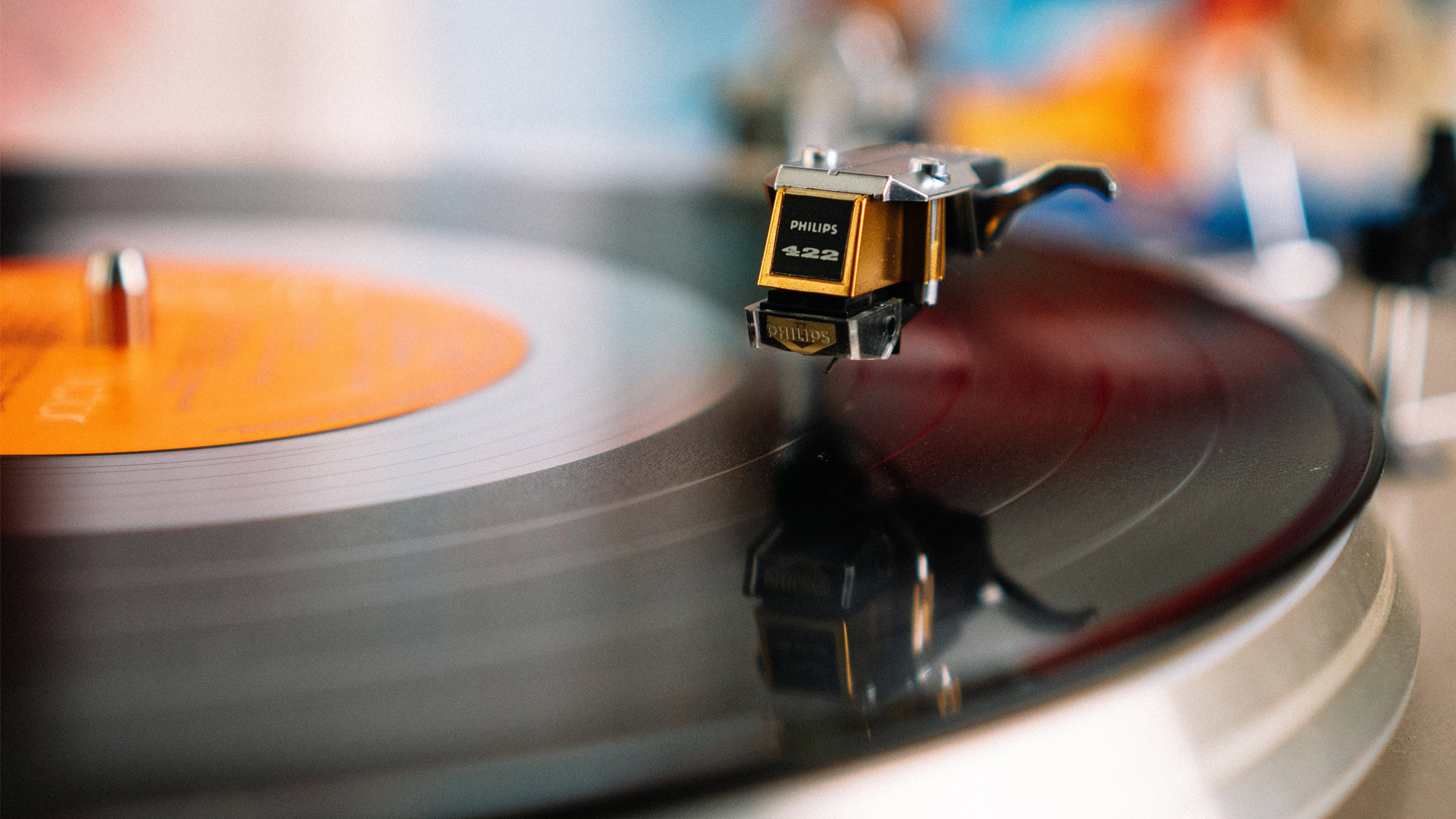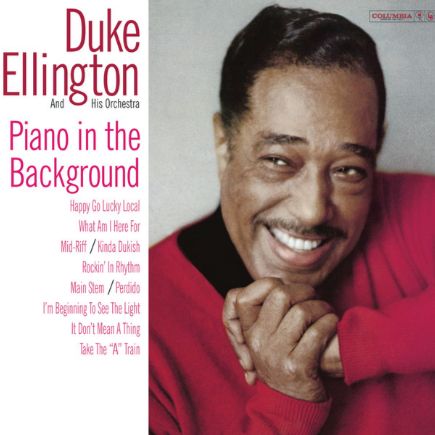Lullaby of Birdland: un hommage swing à Charlie Parker et au jazz new-yorkais
Composée en 1952 par le pianiste et compositeur britannique George Shearing, avec des paroles signées B. Y. Forster (pseudonyme de George David Weiss), Lullaby of Birdland est née d’un projet commandé par Morris Levy, propriétaire du célèbre club de jazz Birdland à New York.
Ce dernier venait de lancer une émission de radio sponsorisée par le club, et souhaitait un thème musical à diffuser toutes les heures. Si Levy proposa d’utiliser sa propre musique, Shearing préféra composer un morceau original, estimant ne pas pouvoir s’identifier à celle de Levy.
Le résultat est une œuvre emblématique, à la fois élégante et accessible. Après une introduction brillante en fanfare, la pièce s’installe dans une mélodie fluide, au swing raffiné, représentative du style cool jazz de Shearing. Dédiée à Charlie ‘Bird’ Parker, Lullaby of Birdland rend hommage à l’un des pionniers du bebop tout en évoquant l’atmosphère vibrante du club qui portait son nom.
Rapidement devenu un standard incontournable, le morceau célèbre autant le génie mélodique de Shearing que l’effervescence de la scène jazz new-yorkaise des années 1950. Le Birdland était alors un temple du jazz moderne, fréquenté par les plus grands: Dizzy Gillespie, Thelonious Monk, et bien sûr Charlie Parker.
Ellington au croisement des époques
Le 20 juin 1960, à Hollywood, Duke Ellington enregistre Lullaby of Birdland avec son orchestre, pour l’album Piano in the Background. Dans cet enregistrement, Ellington privilégie un équilibre subtil entre l’écriture orchestrale sophistiquée et la liberté offerte à ses solistes. Johnny Hodges, au saxophone alto, déroule son phrasé caressant avec une fluidité irrésistible, tandis que Paul Gonsalves apporte une intensité moelleuse au saxophone ténor. Les trompettistes Clark Terry et Cootie Williams alternent finesse et puissance, et Juan Tizol, au trombone, ajoute cette touche de profondeur chaude et stylisée qui a toujours marqué l’orchestre.
Il s’agit de l’un des rares enregistrements où le piano d’Ellington est placé au cœur du dispositif. Loin de se limiter à un rôle d’accompagnateur, il devient ici un fil conducteur, intervenant à des moments-clés dans chaque pièce, affirmant la présence d’un leader souvent plus célébré comme compositeur que comme instrumentiste.
En 1960, Ellington est déjà une légende vivante, mais loin de s’installer dans une posture nostalgique. Piano In The Background témoigne au contraire d’une vitalité intacte: les standards revisités prennent une nouvelle lumière, les solistes s’expriment avec intensité, et l’orchestre tout entier respire une cohésion sereine.
Lullaby of Birdland: un homenaje swing a Charlie Parker y al jazz neoyorquino
Compuesta en 1952 por el pianista y compositor británico George Shearing, con letra firmada por B. Y. Forster (seudónimo de George David Weiss), Lullaby of Birdland nació a partir de un encargo de Morris Levy, propietario del célebre club de jazz Birdland en Nueva York.
Levy acababa de lanzar un programa de radio patrocinado por el club y buscaba un tema musical que pudiera emitirse cada hora. Aunque inicialmente propuso utilizar una composición propia, Shearing insistió en escribir una pieza original, alegando que no se sentía identificado con la música de Levy.
El resultado fue una obra emblemática, elegante y accesible. Tras una introducción brillante y enérgica, la melodía se despliega con fluidez y un swing refinado, característico del estilo cool jazz de Shearing. Dedicada a Charlie « Bird » Parker, Lullaby of Birdland rinde homenaje a uno de los grandes pioneros del bebop, al tiempo que evoca la vibrante atmósfera del club que llevaba su nombre.
Convertida rápidamente en un estándar imprescindible, la pieza celebra tanto el genio melódico de Shearing como el dinamismo de la escena jazzística neoyorquina de los años cincuenta. El Birdland era entonces un templo del jazz moderno, frecuentado por leyendas como Dizzy Gillespie, Thelonious Monk y, por supuesto, Charlie Parker.
Ellington en la encrucijada de las épocas
El 20 de junio de 1960, en Hollywood, Duke Ellington graba Lullaby of Birdland con su orquesta para el álbum Piano in the Background. En esta versión, Ellington privilegia un equilibrio sutil entre la escritura orquestal sofisticada y la libertad concedida a sus solistas. Johnny Hodges, al saxofón alto, despliega un fraseo acariciante con una fluidez irresistible, mientras que Paul Gonsalves aporta al saxofón tenor una intensidad aterciopelada. Los trompetistas Clark Terry y Cootie Williams alternan delicadeza y potencia, y Juan Tizol, al trombón, añade ese toque cálido y estilizado que siempre caracterizó al conjunto.
Es una de las pocas grabaciones en las que el piano de Ellington ocupa el centro del dispositivo sonoro. Lejos de limitarse a acompañar, se convierte aquí en un hilo conductor, interviniendo en momentos clave de cada pieza y afirmando la presencia de un líder que ha sido más celebrado como compositor que como instrumentista.
En 1960, Ellington ya es una leyenda viva, pero lejos de instalarse en la nostalgia. Piano in the Background da testimonio, por el contrario, de una vitalidad intacta: los estándares revisitados adquieren una nueva luz, los solistas se expresan con intensidad, y la orquesta entera respira una cohesión serena.
Lullaby of Birdland: un omaggio swing a Charlie Parker e al jazz newyorkese
Composta nel 1952 dal pianista e compositore britannico George Shearing, con testo firmato da B. Y. Forster (pseudonimo di George David Weiss), Lullaby of Birdland nacque su commissione di Morris Levy, proprietario del celebre club jazz Birdland di New York.
Levy aveva appena lanciato un programma radiofonico sponsorizzato dal club e desiderava un tema musicale da trasmettere ogni ora. Anche se inizialmente propose una propria composizione, Shearing preferì scrivere un brano originale, affermando di non riuscire a identificarsi con la musica di Levy.
Il risultato fu un’opera divenuta iconica, al tempo stesso elegante e accessibile. Dopo un’introduzione brillante e squillante, la melodia si sviluppa con fluidità e swing raffinato, tipico dello stile cool jazz di Shearing. Dedicata a Charlie « Bird » Parker, Lullaby of Birdland rende omaggio a uno dei pionieri del bebop, evocando allo stesso tempo l’atmosfera vibrante del club che portava il suo nome.
Diventata rapidamente uno standard imprescindibile, la composizione celebra sia il genio melodico di Shearing che l’effervescenza della scena jazz newyorkese degli anni ’50. Il Birdland era all’epoca un tempio del jazz moderno, frequentato da leggende come Dizzy Gillespie, Thelonious Monk e, naturalmente, Charlie Parker.
Ellington al crocevia delle epoche
Il 20 giugno 1960, a Hollywood, Duke Ellington registra Lullaby of Birdland con la sua orchestra per l’album Piano in the Background. In questa registrazione, Ellington privilegia un equilibrio sottile tra scrittura orchestrale sofisticata e libertà espressiva concessa ai suoi solisti. Johnny Hodges, al sax alto, dispiega un fraseggio carezzevole e fluido, mentre Paul Gonsalves apporta al sax tenore un’intensità vellutata. I trombettisti Clark Terry e Cootie Williams alternano raffinatezza ed energia, e Juan Tizol, al trombone, aggiunge quel tocco caldo e stilizzato che ha sempre contraddistinto il suono della formazione.
È una delle rare registrazioni in cui il pianoforte di Ellington si colloca al centro della scena. Lungi dal limitarsi all’accompagnamento, assume qui il ruolo di filo conduttore, intervenendo in punti chiave di ogni brano e riaffermando la presenza di un leader spesso celebrato più come compositore che come strumentista.
Nel 1960, Ellington è già una leggenda vivente, ma lungi dal cedere alla nostalgia. Piano in the Background testimonia, al contrario, una vitalità intatta: gli standard rivisitati acquistano nuova luce, i solisti si esprimono con intensità, e l’orchestra intera emana una coesione serena.
Lullaby of Birdland: a swinging tribute to Charlie Parker and New York jazz
Composed in 1952 by British pianist and composer George Shearing, with lyrics by B. Y. Forster (a pseudonym for George David Weiss), Lullaby of Birdland was written as a commission from Morris Levy, owner of the iconic Birdland jazz club in New York.
Levy had just launched a radio program sponsored by the club and wanted a theme to be played at the top of every hour. While he originally proposed using his own composition, Shearing insisted on writing something new, feeling unable to connect with Levy’s music.
The result is a signature piece—elegant, accessible, and instantly recognizable. After a bright fanfare introduction, the tune settles into a smooth, swinging melody typical of Shearing’s cool jazz aesthetic. Dedicated to Charlie “Bird” Parker, Lullaby of Birdland pays tribute to one of bebop’s founding fathers while capturing the vibrant spirit of the club that bore his name.
Quickly becoming a jazz standard, the piece celebrates not only Shearing’s melodic genius but also the energy of New York’s 1950s jazz scene. Birdland was then a sanctuary for modern jazz, hosting legends like Dizzy Gillespie, Thelonious Monk, and, of course, Charlie Parker.
Ellington at the crossroads of eras
On June 20, 1960, in Hollywood, Duke Ellington recorded Lullaby of Birdland with his orchestra for the album Piano in the Background. In this session, Ellington strikes a subtle balance between sophisticated orchestral writing and the freedom granted to his soloists. Johnny Hodges, on alto saxophone, delivers a caressing, irresistibly fluid phrasing, while Paul Gonsalves brings a velvety intensity on tenor sax. Trumpeters Clark Terry and Cootie Williams alternate finesse and power, and Juan Tizol on trombone adds that warm, stylized depth that has always defined the band’s sound.
This is one of the rare recordings where Ellington’s piano takes center stage. Far from playing a merely supportive role, it acts as a guiding thread, surfacing at key moments in each piece and asserting the presence of a leader more often praised as a composer than as an instrumentalist.
By 1960, Ellington was already a living legend, but far from resting on nostalgia. Piano in the Background instead reveals a vitality still very much alive: the reinterpreted standards shine with new light, the soloists play with intensity, and the orchestra breathes a serene and cohesive energy.
Autres articles – Otros artículos – Altri articoli
Duke ELLINGTON (29.04.1899–24.05.1974)
Dizzy GILLESPIE (21.10.1917–06.01.1993)
Paul GONSALVES (12.07.1920–15.05.1974)
Johnny HODGES (25.07.1907–11.05.1970)
Thelonious MONK (10.10.1917–17.02.1982)
Charlie PARKER (29.08.1920–12.03.1955)
George SHEARING (13.08.1919–14.02.2011)
Clark TERRY (14.12.1920–21.02.2015)


